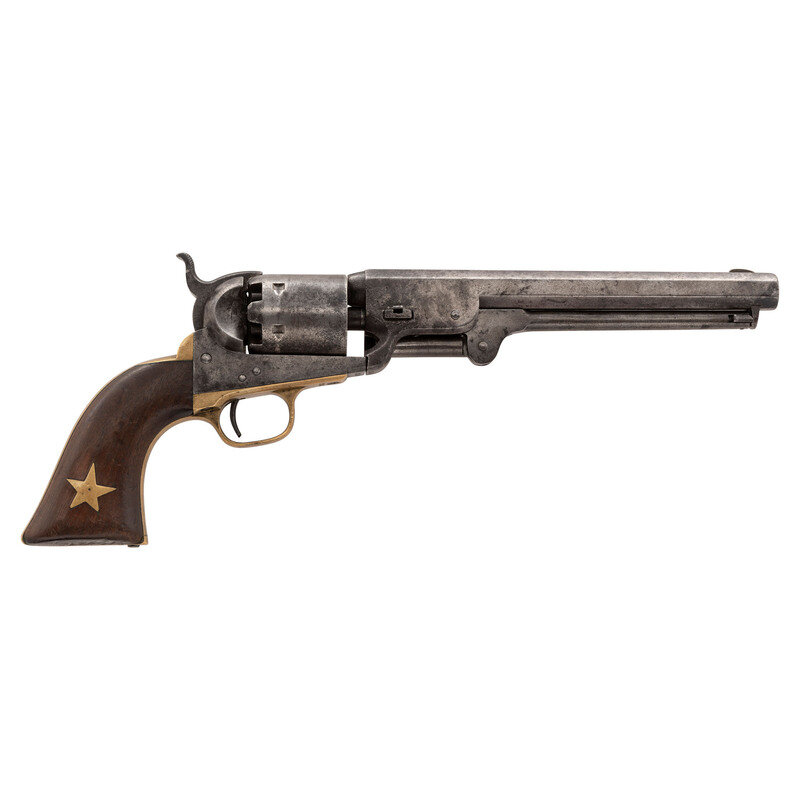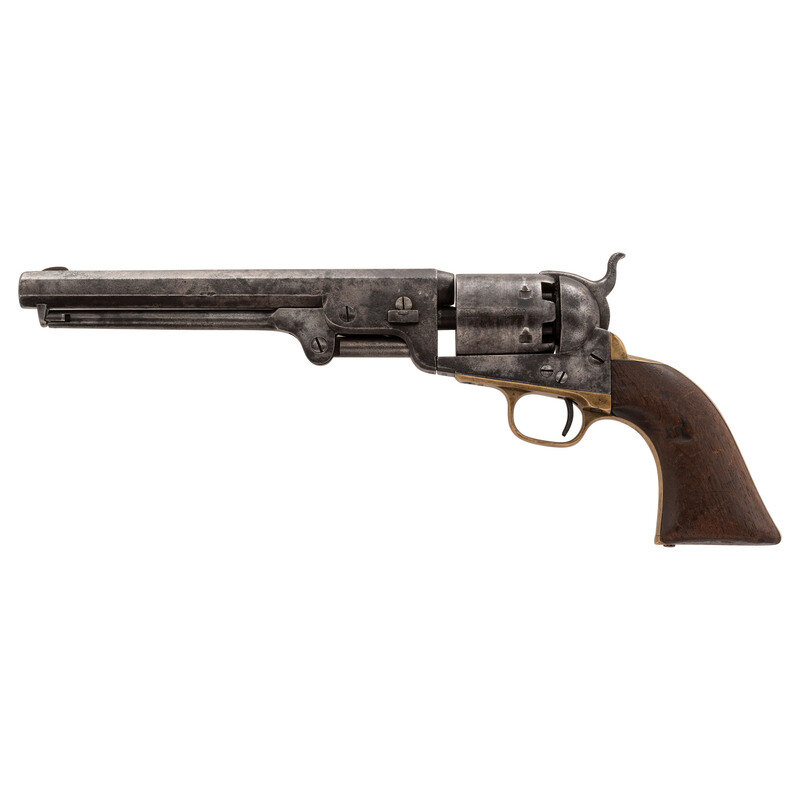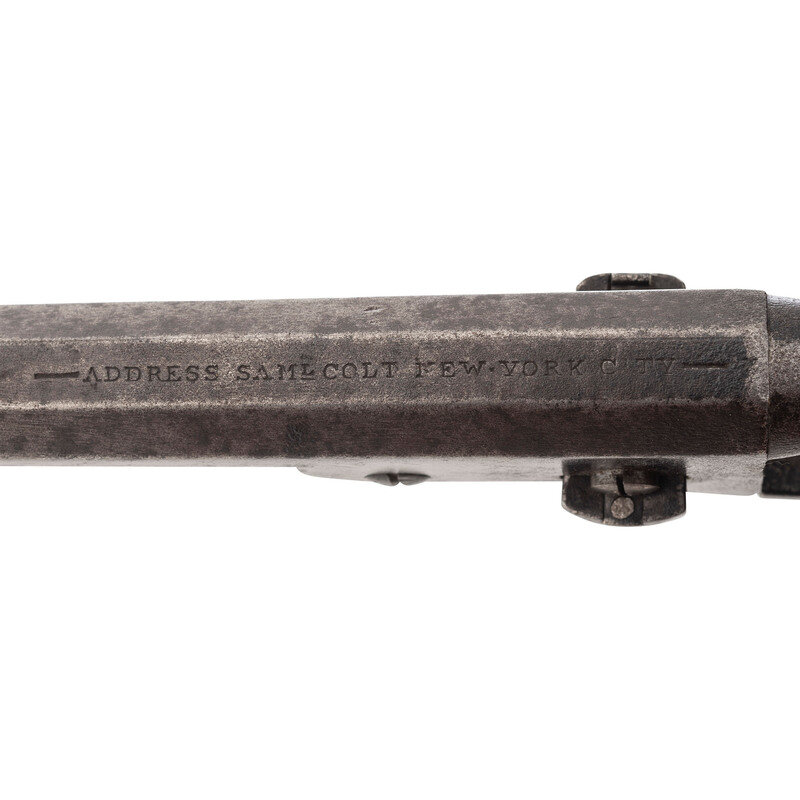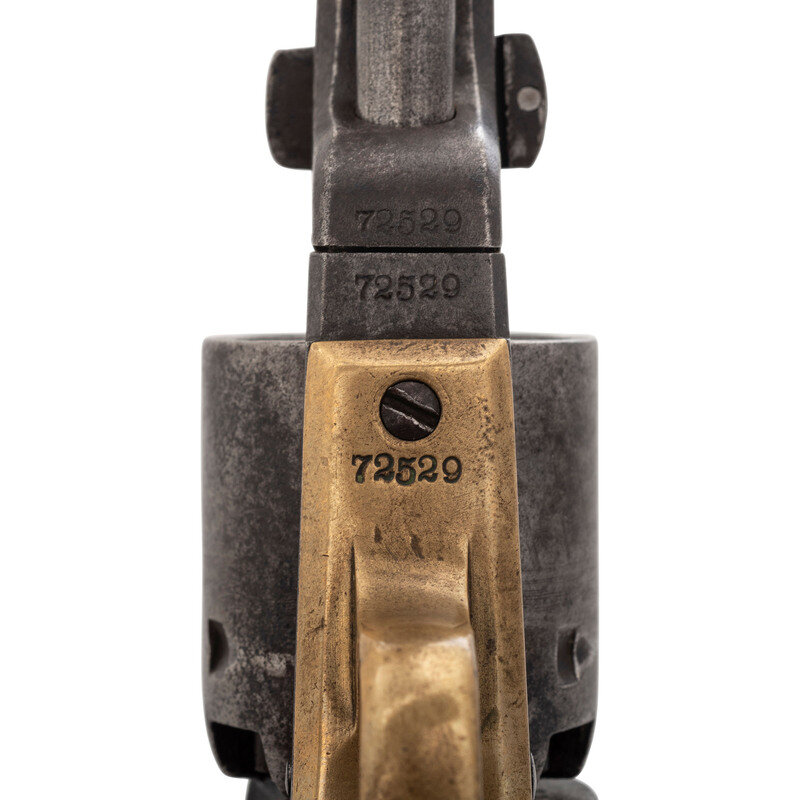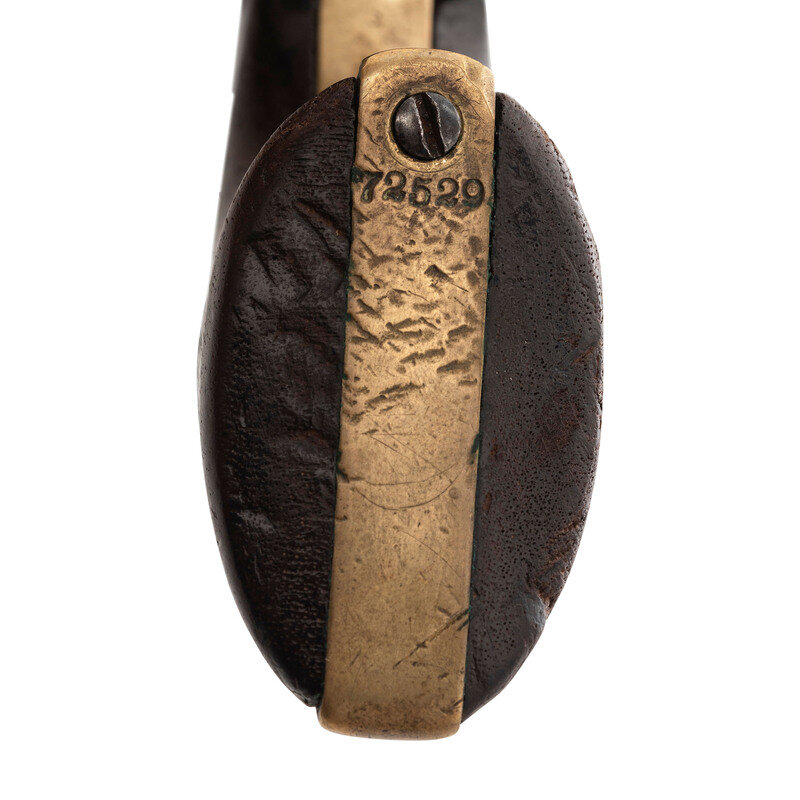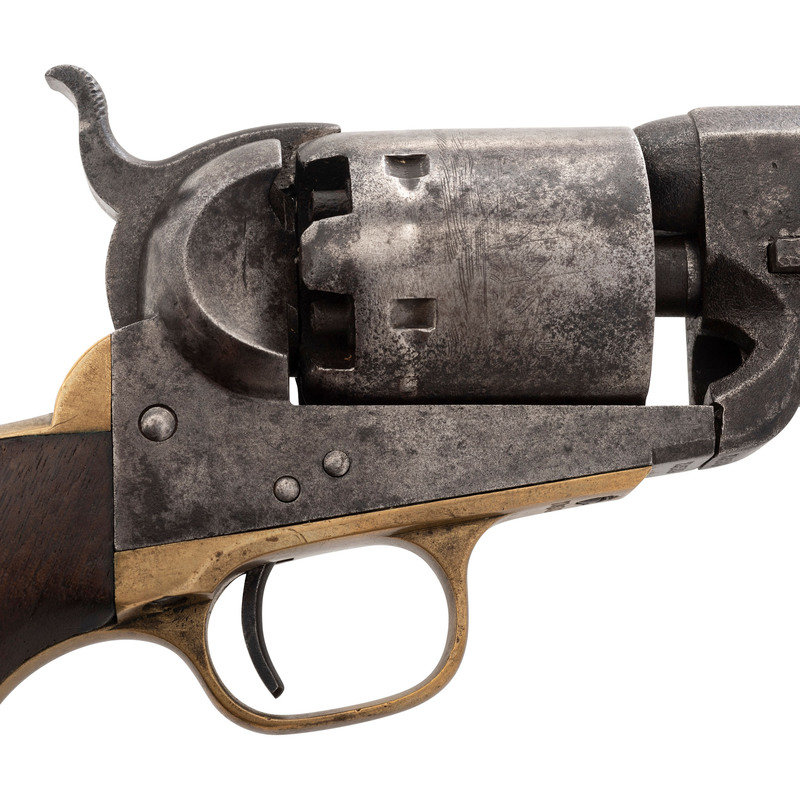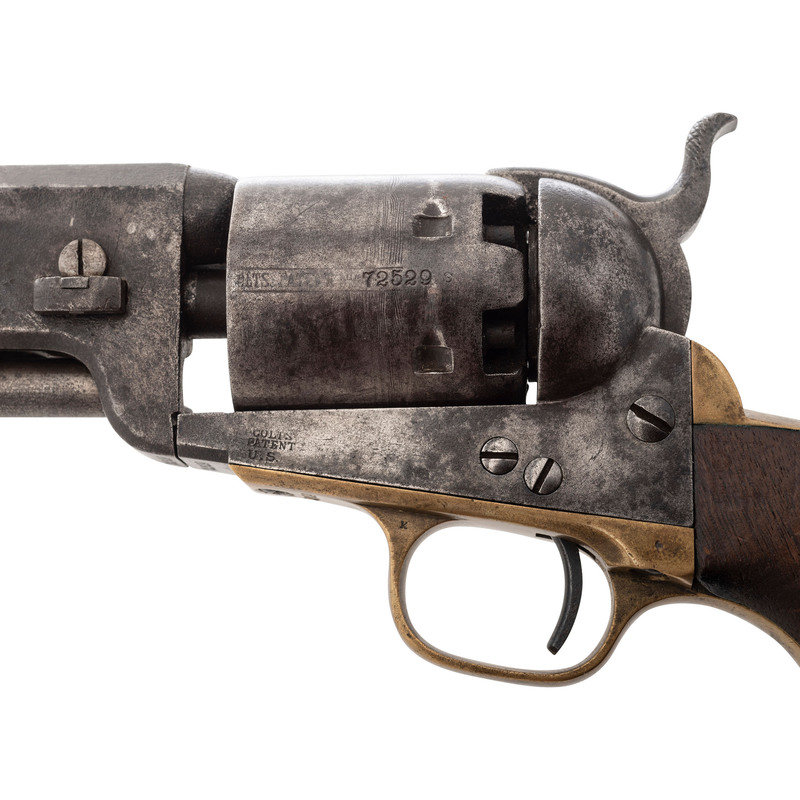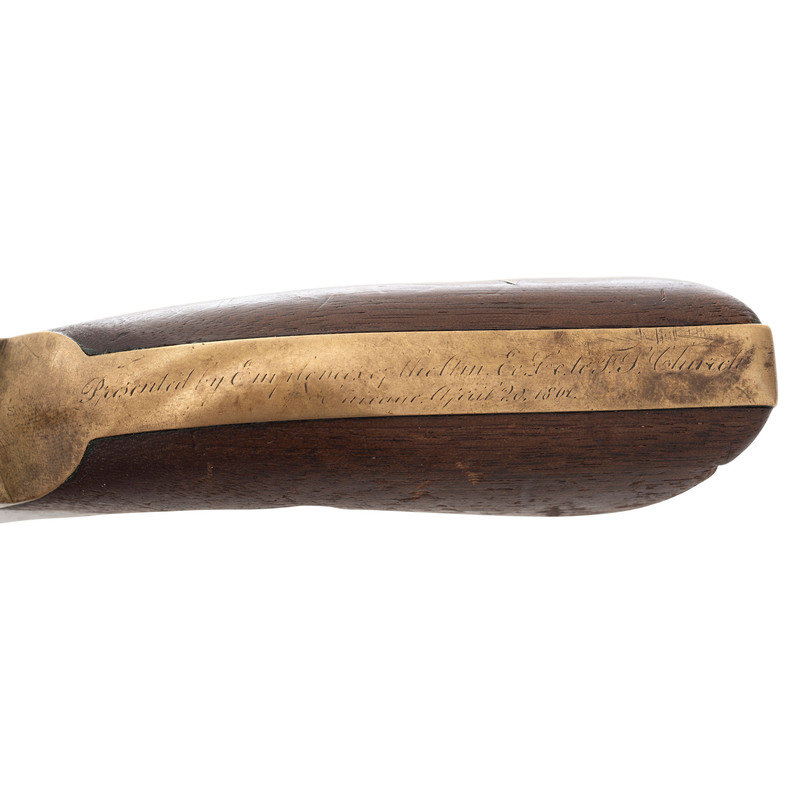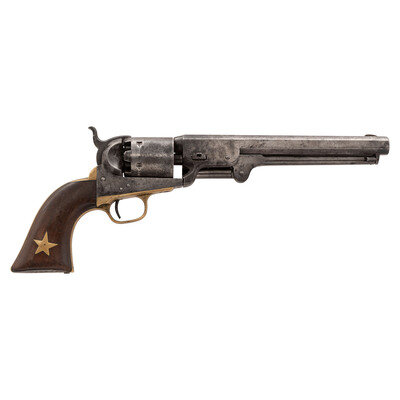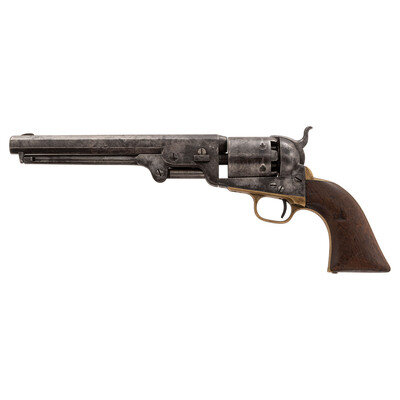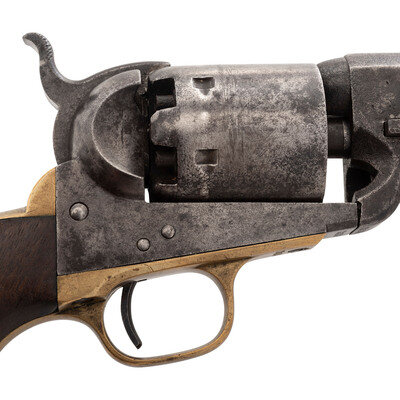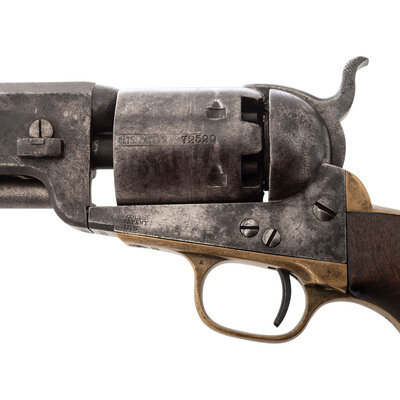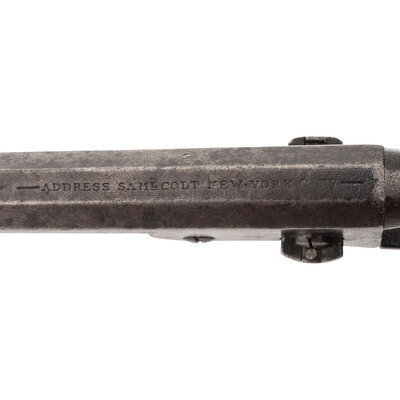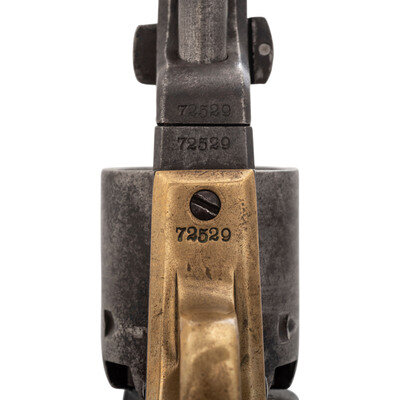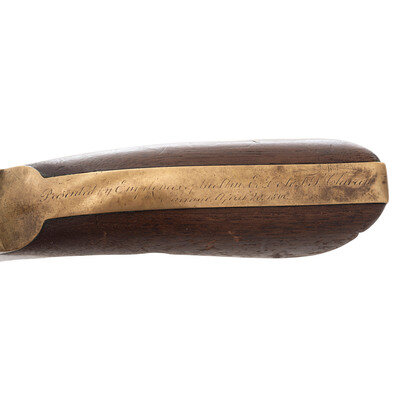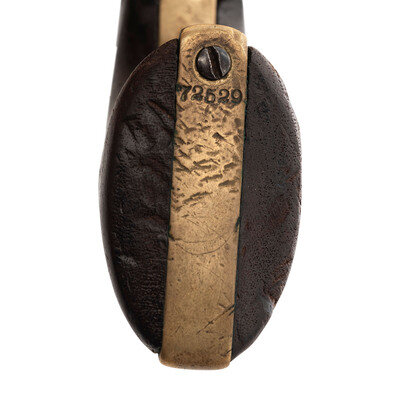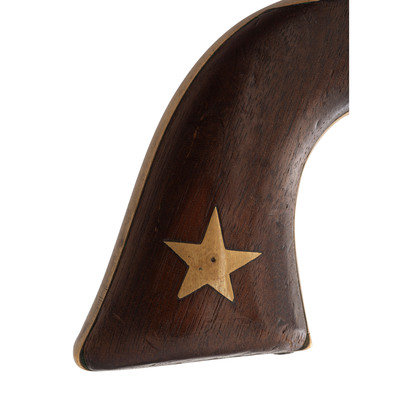.36 caliber. 7.5" octagonal barrel. SN: 72529 (mfg. ca.1857). Blued and color casehardened finish, brass backstrap and triggerguard, one-piece walnut grip. Single action percussion revolver with six-chambered smooth round cylinder and hammer nose notch rear sight with German silver blade front sight. One line barrel address reads - ADDRESS SAML COLT NEW-YORK CITY - with the usual two-line frame marking that reads COLT'S/PATENT with a US surcharge below the marking. Cylinder with Texas and Mexican naval engagement scene and marked COLT'S PATENT followed by the serial number. Matching serial numbers throughout, including the wedge and the grip. Backstrap with well worn engraved presentation that appears to read: Presented by Employees of the Am. Ex. Co. to F.S. Church/Chicago April 20, 1861. A somewhat crudely cut five-pointed brass star has been inserted in the right side of the grip. The presence of the "US" frame mark does not necessarily mean that this was a US military contract gun, particularly in light of the fact that no other military sub-inspection marks are present. Like commercial Single Action Army revolvers that were made up using "US" marked frames, it can be assumed that this frame was an overrun frame that was marked, but was not needed for the purposes of the contract. Other examples of "US" frame marked commercial 1851 Navy revolvers are known.
Frederick Stuart Church (1842-1924) was born in Grand Rapids, MI the son of a prominent local lawyer and politician. At the age of 13 Church went to work for the newly established American Express Company in Chicago, IL. At the outbreak of the American Civil War Church joined "Smith's Chicago Light Artillery" on April 17, 1861. This 90-day volunteer regiment was reorganized as Battery A of the 1st Illinois Light Artillery on July 16, 1861 and mustered for three-years service. The regiment served in the Western Theater of operations through the entire war and saw service at most of the major battles and events in that theater. These included Fort Donelson, Shiloh, Port Gibson, Raymond, Jackson, Champion Hill, the Siege of Vicksburg, the Atlanta Campaign including Kennesaw Mountain and Atlanta and eventually the Battle of Nashville. The 5' 11" Church with a "Dark complexion, hazel eyes, dark hair" was promoted to coporal during his service and was mustered out on July 23, 1864, the day after the Battle of Atlanta, having served his three years.
He returned to Chicago and decided to pursue a career in art and studied under Walter Shirlaw at the Chicago Academy of Design. In 1870 he relocated to New York where he would live out his life pursing his art. He became most noted as an illustrator with his work appearing in Harper's Weekly, Harper's Bizarre, Harper's Young People, Frank Leslie's Weekly and the Ladies' Home Journal, just to name a few. He was most noted for his anthropomorphic and allegorical depictions of animals, in particular for his illustrations that he did for a publication of Aesop's Fables. Church died in 1924 at the age of 82.
The revolver is accompanied by a manila folder of information regarding him, copies of his military service records, etc.
